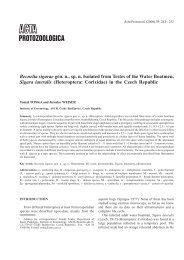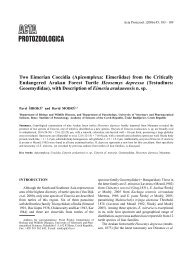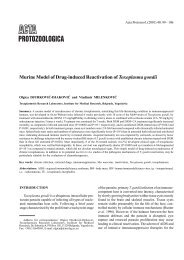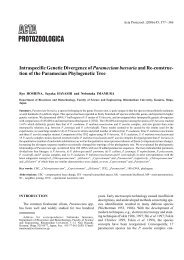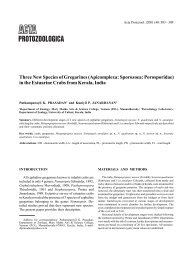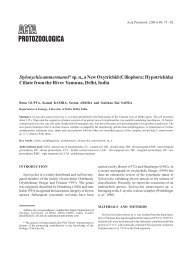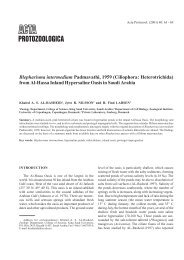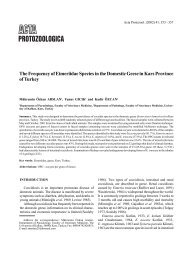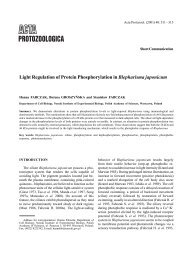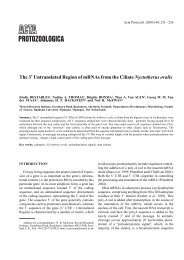New Contribution to the Morphology and Taxonomy of Four Marine ...
New Contribution to the Morphology and Taxonomy of Four Marine ...
New Contribution to the Morphology and Taxonomy of Four Marine ...
You also want an ePaper? Increase the reach of your titles
YUMPU automatically turns print PDFs into web optimized ePapers that Google loves.
On four marine hypotrichs 159<br />
consider <strong>the</strong>m conspecific mainly because, according <strong>to</strong><br />
<strong>the</strong> redescription <strong>of</strong> Wirnsberger et al. (1987), <strong>the</strong> latter<br />
seems <strong>to</strong> have no specialisation <strong>of</strong> <strong>the</strong> “cortical granules”<br />
as observed in P. flavicans, i.e. blood-cell-like<br />
granules <strong>and</strong> <strong>the</strong> colour <strong>of</strong> “pigments” (bright yellowbrownish<br />
vs. yellow). O<strong>the</strong>r differences include <strong>the</strong> fact<br />
that P. flava is smaller (140-250 vs. 200-300 µm long),<br />
has fewer frontal cirri in <strong>the</strong> bicorona (ca 9 vs. ca 14)<br />
<strong>and</strong> transverse cirri (1-3 vs. 3-6) (Table 3), <strong>and</strong> is less<br />
slender (ratio <strong>of</strong> length <strong>to</strong> width about 3-5:1 vs. 5-6:1)<br />
than P. flavicans. In addition, Wirnsberger et al. (1987)<br />
emphasized that <strong>the</strong>re is always a conspicuous gap<br />
(ca 30 µm) between <strong>the</strong> posterior end <strong>of</strong> midventral<br />
rows <strong>and</strong> <strong>the</strong> transverse cirri in P. flava, while in<br />
P. flavicans <strong>the</strong> gap is less conspicuous (



